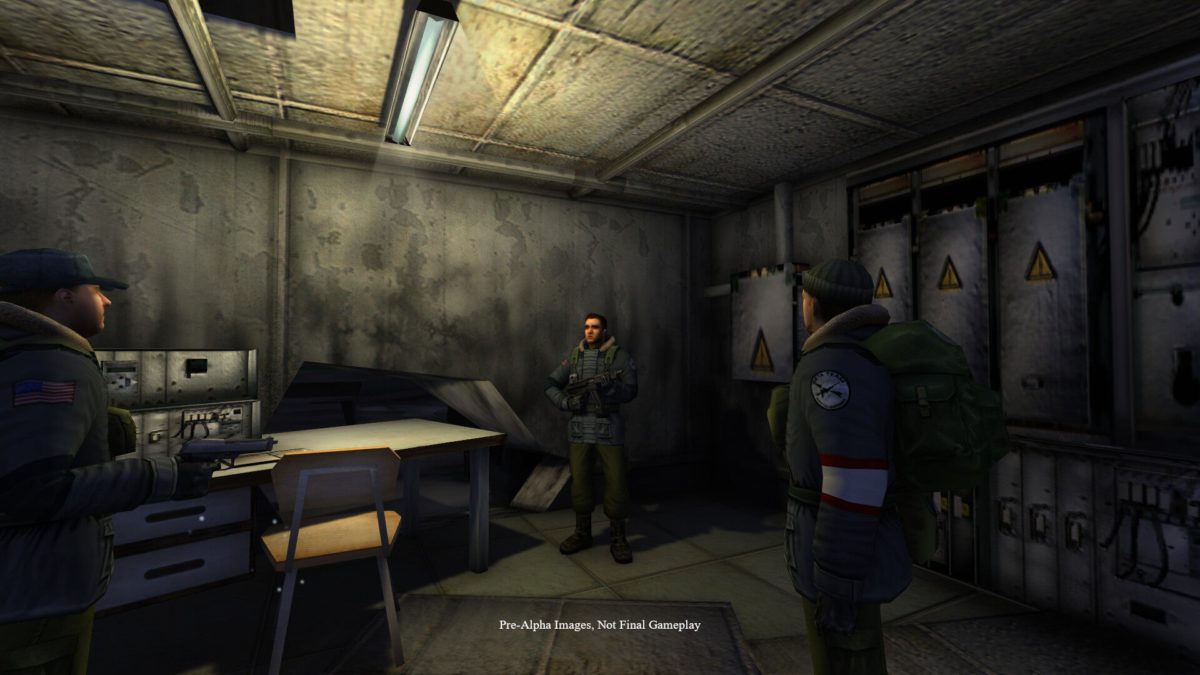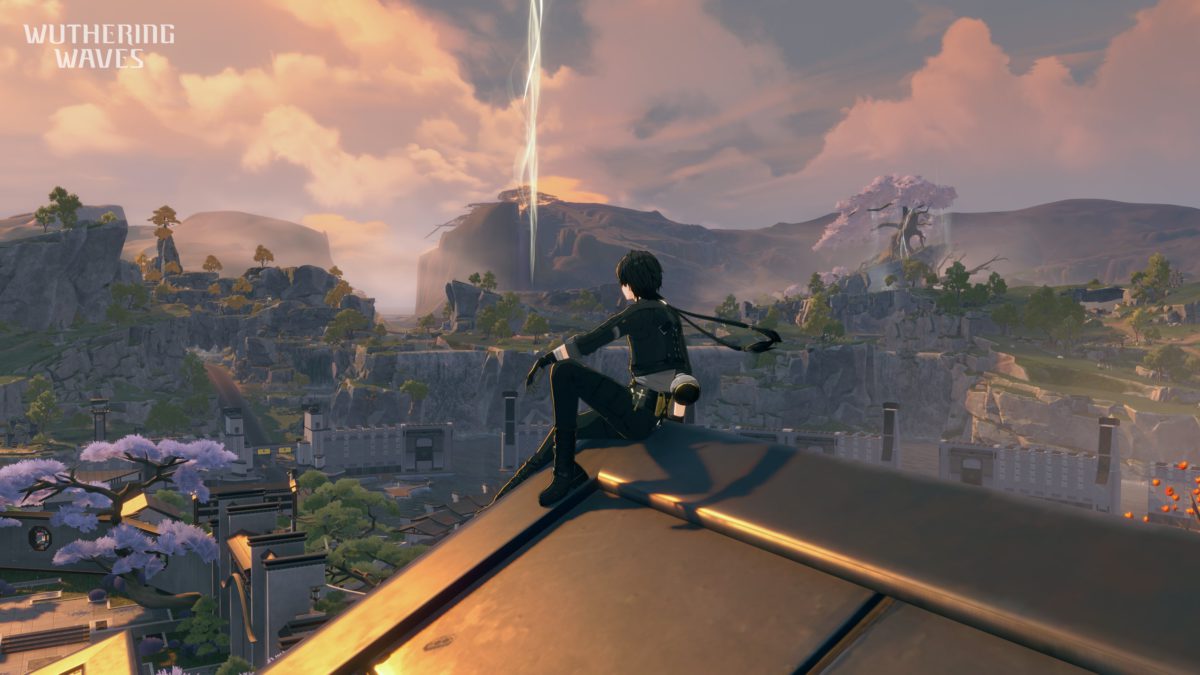Right from the start, Wuthering Waves’ odd mix of swords, guns, and spirits caught my eye, somehow combining disparate ideas into a combat spectacle. This story-driven gacha RPG will have you twirling like a ballerina to dodge attacks before passing the baton to a teammate that then slams the enemy with a fish-like dragon. Unfortunately, while those flashy, fast-paced fights and the exciting parkour-like movement quickly endeared Wuthering Waves to me, it also failed to impress in a few other key areas – including a lackluster story that sometimes tempted me to use the skip button.
Wuthering Waves is all about action. Every character has an element and weapon type associated with them, as well as individual skills that you can level up. However, how you use those characters isn’t quite a copy-paste of similar action-RPGs like Genshin Impact. That’s thanks in part to the intro and outro skills that can be used when you swap between each character in your three-person team, which activate cool special attacks like triggering a fire-infused shootout. You also charge up a separate skill gauge by dishing out damage or successfully dodging and parrying enemy attacks, and these systems add an appreciated layer of strategy to how you build your party and when exactly to change teammates.
Characters also have unique combos you can activate during combat, all of which you can practice in dedicated tutorials for each one. To use them, you might need to press the same button four times, press and hold a button after performing a different attack, or jump in the air for an aerial attack before activating an alternate combo. It can take a bit to memorize those inputs, but doing so for your favorite fighters makes using them even more satisfying. It’s nice that Wuthering Waves encourages you to try them all out at least once, too, even offering some small rewards for your trouble.
All that nuance makes combat a lot of fun, though it stumbles a bit with its element system, which doesn’t feel like it contributes anything significant. None of the six elemental types inflict status effects like you might expect – fire doesn’t deal damage over time and ice doesn’t immobilize enemies, for example – so it doesn’t really matter if your character is Fusion (Fire) or Glacio (Ice). It’s the variation in their actual movesets that matter, and their different elements are essentially just color-coding. Those movesets still differ enough that experimenting with team comps feels fun, but it’s a little disappointing that a character could be any element and they would play essentially exactly the same way.
They could hit just as hard as well, assuming you can equip them with the right gear to raise their damage. Rather than using traditional equipment like helmets and gloves, you strengthen your characters with Echoes: animal-like companions that increase your attack, elemental damage, and so on. The strength of those buffs depend on how many of the same type you equip at once, and each Echo takes up some of the limited space in your equipment slots. These restrictions encouraged me to strategize about how I could squeeze the most benefit out of the space I had, even if that meant temporarily using Echoes with suboptimal stats. Tuning, the process of unlocking additional stats for Echoes, unlocks those stats at random. This makes optimizing Echoes more difficult to achieve, but I didn’t feel like it hindered things too much – it was more of a bonus rather than a necessity.
The best part about Echoes is how they tie into the environment. As you fight enemies and bosses, they will sometimes leave behind ghost-like shells of themselves for you to absorb and convert into Echoes. I felt more compelled to explore because finding different types of monsters could mean getting access to Echoes with new effects. Not only does this system reward you with interesting gear for your characters, it encourages you to fill out your map as you go. Capturing Echoes even gets you points in a collection tracking guidebook, as well as a battle pass full of rewards, so there are reasons to hunt them beyond just upping your stats. Gotta catch ‘em all!
The hunt for Echoes also motivated me to keep fighting enemies in the overworld, even if I could blow through them with a high-level team. Clearing out smaller enemies like this was especially satisfying when every part of the map was shiny and new. However, after playing over 30 hours of Wuthering Waves, bulldozing through the same enemies over and over does start to feel repetitive, even as I continue to discover new parts of the map. On the bright side, at least you can farm for Echoes as often as you want – that’s much nicer than Genshin Impact’s artifact system, which is locked behind a daily currency.
Even when I am happily farming, one part of Wuthering Waves that totally falls flat is its story. Developer Kuro Games has openly spoken about how it had to revamp the entire story ahead of launch, and it pains me to say it that the version we ultimately got still falls short, with uneven pacing and too much exposition. The beginning is full of unnatural, lengthy conversations that use cryptic terminology you need to look up in encyclopedias and loading screens to actually understand, and it doesn’t get any more compelling once you do.
Your main character follows the classic trope of an amnesiac protagonist that seemingly appears out of nowhere, with a generic story that revolves around the secret of their past. That can work if done right, but this setup feels confusing and undeserved because of all the history and jargon thrown at you without any explanation as to how all of it connects. Things start to clear up in the later acts of the first chapter, only for it to introduce more characters that divide your attention before you can get to know them. It doesn’t help that the voice acting sounds borderline monotone across the board, even during intense cutscenes. When comparing it to contemporaries like Honkai: Star Rail, which flaunts expressive voice acting even in its side quests, it’s difficult to stay entertained throughout.
Most side quests I’ve seen haven’t done much to connect me to the other characters or the setting, either. You can witness the dangers of this apocalyptic environment, like dying NPCs and comrades that melodramatically tell you to go on without them, but there’s nothing that truly makes you think anyone important will get hurt. Small things, like the very few moments when your hero suddenly speaks despite otherwise being largely silent, are also jarring. At some points, I even preferred to mash buttons to quickly skip through a tedious conversation or leave a scene on autoplay so I could just listen without reading all that text.
Kuro Games occasionally attempts more meaningful side quests, like one about a monster mourning its mate and a researcher who similarly lost their partner, but not enough of them stand out. These memorable quests are more of a rarity than the norm. I still have a handful of big side quests waiting to be completed, but I’m already dreading the text blocks I’ve come to expect from them. At this point, I’m more compelled to play through these missions for their rewards alone rather than out of curiosity to see if they will somehow change my mind. Either way, I’m not perched on the edge of my seat, expecting some big surprise.
It took me about 20 hours to complete the main story that’s currently available, and I’ve played around 10 more in the endgame past that. Many free-to-play RPGs tend to slow down towards the end, leaving you to raise your level through farming the materials needed to level up characters and weapons or hunting down new Echoes. At level 32, I’ve reached a point where I spend most of my time either experimenting with team composition and finding new ways to earn rewards. Waveplates, the currency used to claim rewards like character-building materials from challenges, generate at a rate of 10 for every hour. It isn’t sinfully slow, but when the most satisfying parts of Wuthering Waves are its combat rewards and progression, it feels like a waiting game for new Waveplates.
That said, the rewards for climbing the ranks are tantalizing enough that they’ve also encouraged me to dig deeper on their own. Gacha games have fail-safes called “pity systems” to make sure players eventually get a high-quality reward for their banner pulls (the fairly standard system where you trade in-game currency for random characters and weapons). For what it’s worth, Wuthering Waves has been more generous with its pity system than many other games in this genre, only taking 80 gacha pulls to get to a guaranteed 5-star character or item versus the 90+ pulls I’m used to seeing. It also offers tons of resources during the initial honeymoon phase, handing out dozens of pulls whenever you climb 10 or so ranks, along with other systems that make them particularly easy to earn at the beginning.
You’re guaranteed to get at least one random 5-star character from the beginner’s banner, plus another banner that gives you a 5-star character of choice after 80 pulls. And on top of that, Wuthering Waves handed out a free pass (that will be available until next year) for another 5-star character, which means you could have at least two top-tier fighters in your party within the first few hours of playing and a third if you stick around for a couple more. You’re still at the luck of the draw beyond that, but it feels generous out of the gate, especially for any gacha game fans burnt out on bad pulls elsewhere.
Some of the characters I’ve seen do feel underpowered compared to others, which is sort of inevitable in games where the cast grows over time like this. However, Wuthering Waves does its best to offer “future-proof” free-to-play characters that make it easier to build optimized rotations without having to constantly keep up with new releases. You unlock six 4-star characters for free through the story and challenges that can charge your party’s energy, strengthen their attacks, and heal as needed. It’s great that this foundation plus the 5-stars mentioned earlier make it so that beginners can start building strong team comps that feel satisfying right away.
Kuro Games also offered heaps of rewards as an apology for bugs that were reported around the initial launch, though I didn’t see anything nearly as bad as some others did. I used Wuthering Waves’ cross-progression to try it on three different devices: a high-end gaming laptop, a Legion Go handheld PC, and an iPhone 12 Pro. Apparently some bugs have made Wuthering Waves essentially unplayable on certain devices for many people, but I haven’t experienced anything significant enough to make me stop playing. I’ve suffered from occasional lag when fighting bosses or after playing long amounts of time, but only small blips that were quickly forgotten across dozens of hours. That said, it was still nice that the apology rewards made the slower endgame progression move a little bit quicker.






